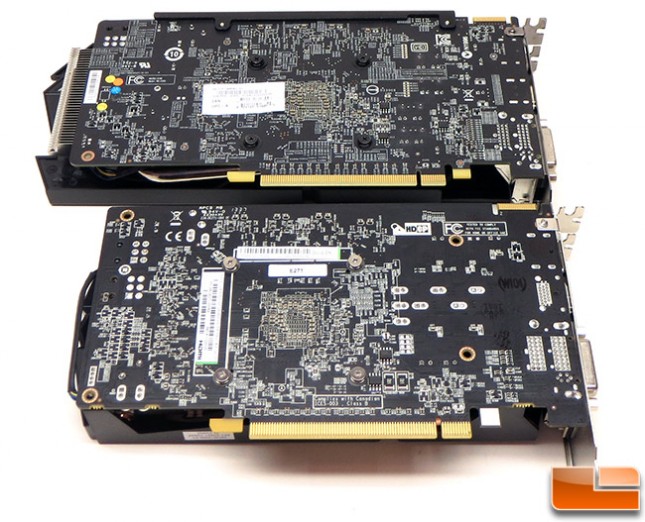MSI Radeon R9 270 Gaming OC and Sapphire Dual-X R9 270 OC Video Card Review
AMD Targets Video Cards At The $179 Price Point
Advanced Micro Devices (AMD) has been keeping us extremely busy launching new graphics cards and this week is no different. AMD announced the Radeon R9 270 graphics card this morning at the $179.99 price point. This is the sixth video card that AMD has added to the Radeon R7 and R9 series of video cards since October! This ‘new’ card is interesting as it reduces the entry price into the high-end R9 series down to the $179 price point and uses the same exact Pitcarin GPU found on the AMD Radeon R9 270X!

The AMD Radeon R9 270 is pretty much the same thing as the Radeon R9 270X, but it features a lower GPU clock speed and power envelope. The AMD Radeon R9 270X had a typical board power of 180 Watts and required two 6-pin PCIe power connectors. The new AMD Radeon R9 270 has a typical board power of just 150 Watts, which means it can get away with a single 6-pin PCIe power connector. This is significant as many older systems and the vast majority of store bought systems can only handle a modest discrete graphics card.
| Radeon R9 270 | Radeon R9 270X | Radeon HD 7870 GHz | |
|---|---|---|---|
| Release Date | November 2013 | October 2013 | March 2012 |
| Original SRP | $179 | $199 | $349 |
| GPU | Pitcarin | Pitcarin | Pitcarin |
| Process | 28nm | 28nm | 28nm |
| Transistors | 2.8 billion | 2.8 billion | 2.8 billion |
| Stream Processors | 1280 | 1280 | 1280 |
| Clock Speed | 925 MHz | 1050 MHz | 1000 MHz |
| Frame Buffer | 2GB | 2GB | 2GB |
| Memory Width | 256-bit | 256-bit | 256-bit |
| Memory Clock | 1400 MHz | 1400 MHz | 1200 MHz |
| Compute Perf | 2.37 TFLOPS | 2.69 TFLOPS | 2.56 TFLOPS |
| Texture Units | 80 | 80 | 80 |
| ROPs | 32 | 32 | 32 |
| Typical Board Power | 150W | 180W | 175W |
The AMD Radeon R9 270X was clocked at 1050 MHz on the core and 1400 MHz on the GDDR5 memory. The new AMD Radeon R9 270 runs at 925 MHz on the core and 1400 MHz on the GDDR5 memory. This means the core clock speed has been lowered 75MHz, which is right around a 7% clock speed reduction from the R9 270X. The lowered clock speed means that the card has just 2.37 TFLOPS of compute performance versus 2.69TFLOPS before. This is a decrease of 11.9-percent, so it looks like lowering the clock speeds and board power will certainly have an impact on gaming performance and thus the $20 price cut.
Here is a quick table that compared the key specifications for some of the Pitcarin based graphics cards. Now that you know what the key changes are between the ‘old’ AMD Radeon R9 270X and the ‘new’ AMD Radeon R9 270, we can dive into the review!
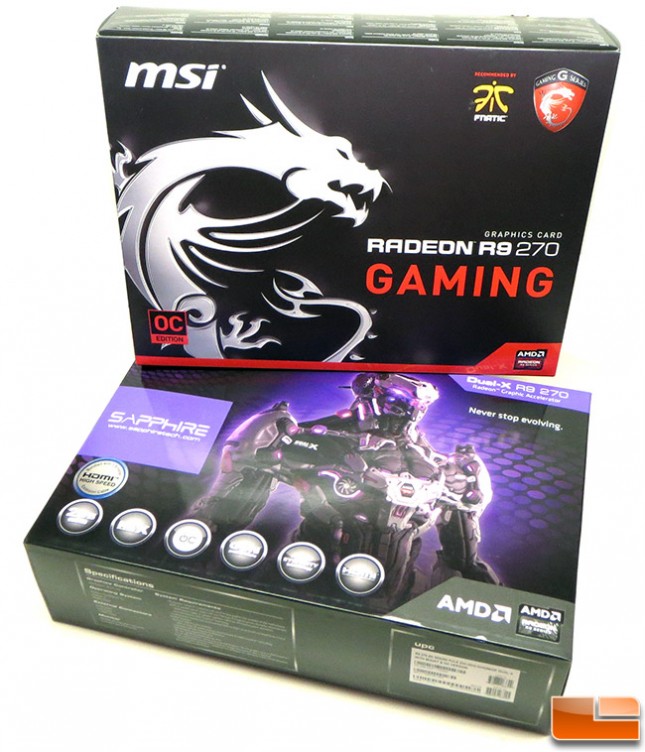
AMD did not send us their Radeon R9 270 reference card, but we were able to get our hands on a pair of retail cards from our friends at MSI and Sapphire! MSI sent over the Radeon R9 270 Gaming OC 2GB video card (part number R9 270 GAMING 2G) and Sapphire sent the Dual-X R9 270 2G GDDR5 with Boost (Part number 11220-00-40G).
| MSI R9 270 Gaming OC | Sapphire Dual-X R9 270 OC | |
|---|---|---|
| SRP | $179 | $179 |
| Clock Speed | 975 MHz | 945 MHz |
| Memory Clock | 1400 MHz | 1400 MHz |
As you can see from the table above both the MSI and Sapphire Radeon R9 270 cards that we were sent are factory overclocked cards. The MSI R9 270 Gaming is 50MHz over stock and the Sapphire Dual-X OC is 20MHz over the reference cards speeds set by AMD. This is a modest overclock by all means, but remember we are likely going to be overclocking limited by the power envelope on this card and the single 6-pin PCie power connector.
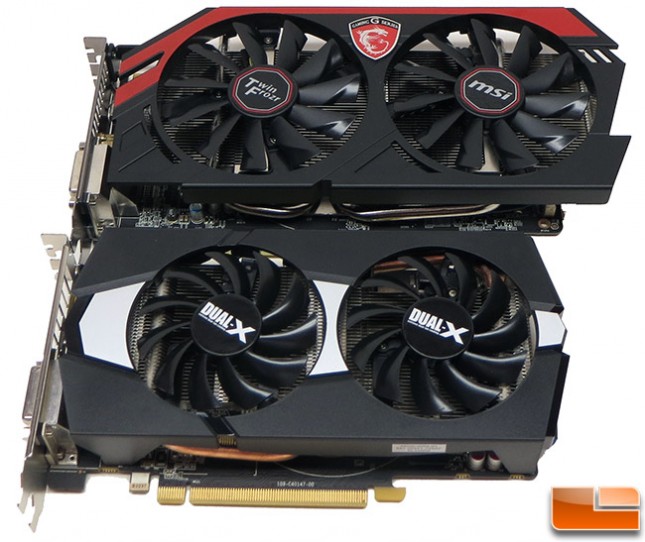
Both AMD Raedeon R9 270 video cards feature dual-slot GPU coolers with twin cooling fans and share the same GPU and amount of memory and that is where the similarities end. Both companies made custom PCBs for their Radeon R9 270 cards, The Sapphire Dual-X R9 270 OC video card measures 7.8-inches in length, but the fan shrouds brings the total length of the card to just uner 8.25-inches. The MSI R9 270 Gaming is 10-inches long (PCB Measures 8.75-inches, but the fan aluminum cooling fins and fan shroud both extend past the PCB).
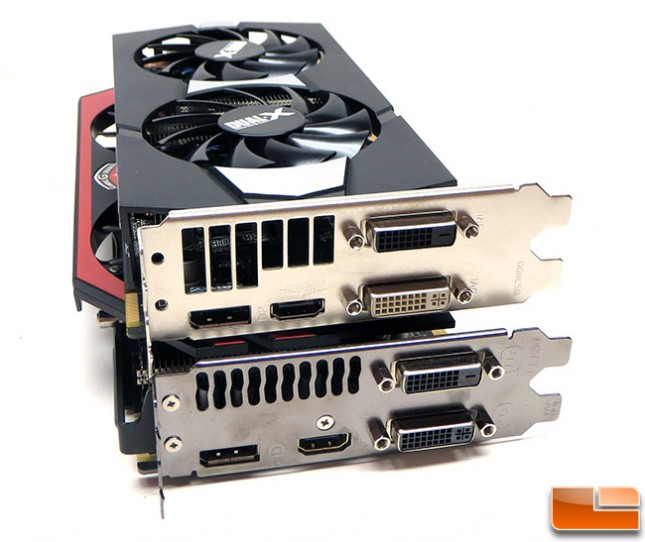
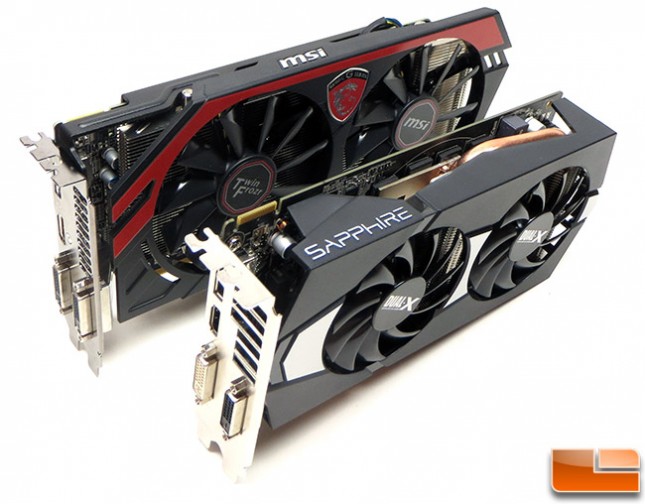
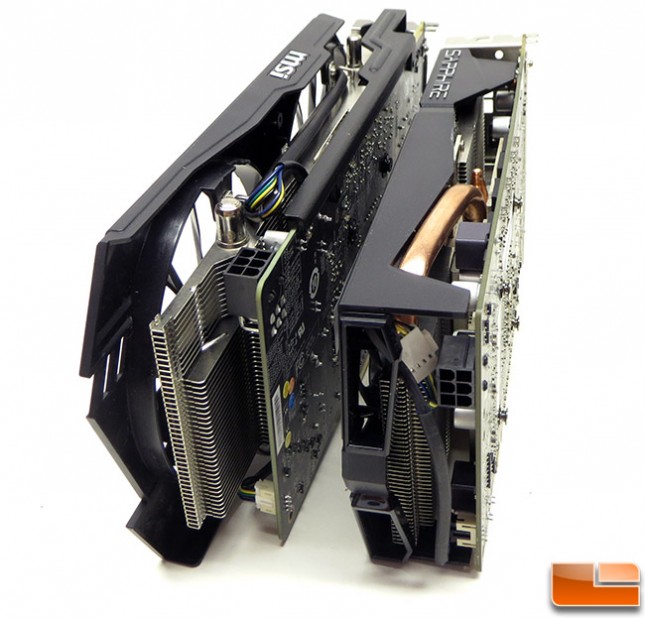
Both cards have a single of 6-pin PCI Express power connector located near the end of the card. The MSI R9 270 Gaming OC has it located on the top and the Sapphire Dual-X R9 270 has it located at the end of the video card. Both MSI and Sapphire recommend a 500W or greater power supply with one 75W 6-pin power connector for this video card to operate properly. If you wanted to run AMD CrossFire at some point in time, the recommended PSU is a 600W or greater model with two 75 Watt PCIe power connectors.
